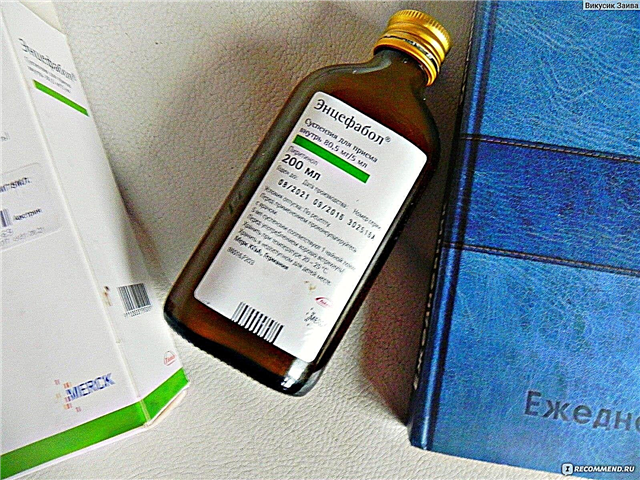Green feces with mucus in a baby by default is not a sign of pathology, but is a kind of norm. Thus, there should be no reason for concern, provided that the baby feels normal, is active, demonstrates good sleep and appetite. If the baby begins to be capricious, behaves restlessly or, conversely, is almost inactive, refuses to eat, sleeps poorly, you need to consult a doctor and find out the cause of the malaise in order to start adequate treatment.

Baby chair is one of the indicators of the health and proper development of the baby
Normal stool with hepatitis B
Stool in breastfed babies can have different shades and textures, in almost every case this will be the norm. Variations in shades are numerous, from light yellow to green. The specific characteristics of the stool of a child on HB depend on a number of factors:
- Individual characteristics of the newborn's body;
- Correctness of breastfeeding;
- Physiological immaturity of the gastrointestinal tract and a lack of digestive enzymes;
- The presence or absence of additional fluid in the baby's diet (for example, in addition to mother's milk, the baby can be given plain water, chamomile broth, medicinal suspensions, etc.);
- Nutrition of a nursing woman;
- The presence of hormones in breast milk;
- Finding feces in the open air (it oxidizes, the color and smell change);
- Taking certain medicines by a nursing woman.
On a note. As for the structure of feces, it normally looks like gruel or thick sour cream. Loose stools are allowed, the presence of mucus, white blotches, foam, sour smell is most often not a sign of a violation.
In the first days after birth, green stools in an infant are common. At this time, the crumbs excrete meconium (original feces), which has a dark green color, is characterized by a viscous structure and lack of odor.
During the first months of life, the baby's stool has time to change color and consistency several times. On the third day, after removing meconium from the intestines, the baby's feces brightens, as the baby begins to feed on breast milk (or colostrum).
Important! If the original feces continue to come out for 4-5 days, it is necessary to find out if the baby is getting enough milk. Then you need to properly organize the feeding.
By the seventh day, the child's stool acquires a mustard hue, becomes liquid or pasty. It also gives off a very faint sour milk smell. Normal options allow for green, orange feces, mucus and white particles. If at the same time the baby feels well and steadily gains weight, there is no reason for concern. Therefore, the appearance of green feces in a two-month-old baby most often does not pose a danger to the baby's health.
As for the frequency of bowel movements, in a newborn baby, it also changes as it grows. During the first weeks after birth, babies poop every day after almost every breastfeeding.
After 6 weeks, the stool schedule becomes more rare: before the introduction of complementary foods, the intestines of the infant empty once every few days. Large soft stools in this case are not a sign of constipation. The latter is characterized by hard feces, which resemble "goat nuts" in appearance and cause significant discomfort during bowel movements.

Normal and abnormal breastfeeding stools
Causes of green stools
The main factors under the influence of which the child's feces acquire a greenish tint are the following:
- Meconium release in the first days after birth.
- Nutrition for a nursing mother. For example, if a woman often and in large quantities consumes vegetables (zucchini, cucumbers and others), as well as foods that cause fermentation in the intestines. Sudden changes in the mother's diet can also cause green poop in the baby. Therefore, new foods should be introduced into the diet gradually. The consumption of spicy, fatty, fried foods also affects the stool of an infant who is on HB.
- Oxidation in air. This often happens when parents do not immediately detect children's feces.
- Dysbacteriosis. This condition is due to the immaturity of the infant's digestive system. For this reason, the intestinal flora of the newborn has not yet had time to form. Bacteria may be present, but their quality (beneficial or pathogenic) and quantity are not yet balanced. The lack of such a balance leads to dysbiosis.
- Imbalance in front and back milk. If the baby receives only the front liquid milk without reaching the fatty back milk, the baby's stool becomes green and frothy. In addition, the crumbs have insufficient weight gain.
- Taking antibiotics by a nursing mother (bacteriophages, which are part of many such drugs, upset the balance of an already unformed microflora) or preparations containing iron or other medicinal substances.
- Bacterial and viral intestinal infections. Inflammatory processes in the gastrointestinal tract caused by infectious pathogens can also be the reason why a newborn baby poops green.
- Lactase deficiency. This phenomenon is not so common among babies, but it does take place. Pathology occurs due to the fact that the body of the crumbs does not produce a sufficient amount of digestive enzymes that can break down lactose.
- Physiological jaundice, lasting a long time. In this condition, the body produces an excess amount of bilirubin, which gives the stool a green tint.
- Poor quality or inappropriate formula can cause green stools in mixed-fed babies.

The diet of a nursing mother is one of the common reasons why a baby's stool turns green.
Bacterial and viral intestinal infections
The appearance of green blotches in the feces of an infant may be the result of swallowing mucus from the nose, which is excreted in large quantities with infectious diseases of the respiratory tract. Obviously, this is not a pathology.
As for intestinal infections, babies get sick with them quite often. Common signs of gastrointestinal problems are the presence of mucus in the stool, as well as a change in its color and consistency.
The causes of these symptoms can be:
- Staphylococcal infection;
- Rotovirus;
- Salmonellosis;
- Dysentery;
- Intestinal flu;
- And other infections.
Important! When the first symptoms are detected, which include a change in the color of feces and the appearance of mucus in it, it is necessary to pass tests for bacteriological culture as soon as possible.
Lactase deficiency
The reason why a child poops green may be lactase deficiency. This is a serious disorder in the child's body that requires medical attention. Lack of the lactase enzyme produced by the body leads to the fact that the baby cannot digest milk sugar - lactose, which is found in breast milk. Getting into the gastrointestinal tract, the substance is not absorbed, as a result of which the crumb gains weight poorly.
Lactase deficiency is of two types:
- Natural;
- Hereditary.
This condition usually goes away by 9 months, provided that the child and his mother are undergoing medical therapy. The doctor adjusts the nutrition of a nursing woman, and also prescribes medications that compensate for the lack of lactose in the newborn's body.
On a note. In some cases, secondary lactase deficiency occurs. Most often this occurs due to the transferred intestinal infection. As a treatment, the doctor prescribes drugs that restore the function of enzyme production by the gastrointestinal tract.

Lactase deficiency is a rather serious disorder that requires medical attention
Mucus in a newborn's stool
The increased secretion of mucus indicates the fact that alkali and acids are entering the intestines in large quantities. To protect itself from their effects, the body begins to actively secrete mucus, which, mixing and processing with food, ends up in the child's stool.
This often happens in a baby in the first days and weeks after birth. Mucous discharge is formed as a result of the interaction of various bacteria (both beneficial and pathogenic) that have entered the digestive tract along with food. After the "fight" of microorganisms stops, and a normal microflora is formed (closer to a year), the mucous inclusions will disappear.
The physiological reasons for the appearance of mucus in children's stool are also:
- Feeding mode. If too much time passes between feedings, and at one time the baby eats a large amount of food, fermentation takes place in the digestive tract, and mucus is formed.
- Complementary feeding (early introduction of complementary foods, incorrect order of introduction of products unfamiliar to the child). If changes in stool are observed, it is better to refuse the introduction of complementary foods until it is normalized.
- Mother's nutrition. If a woman consumes a lot of fruits and raw vegetables, as well as other foods that provoke flatulence, mucus may appear in the baby's stool.
- Improper baby feeding. A short lactation session leads to the fact that the baby does not have time to get enough milk (the baby drinks only the front liquid). As a result, mucus may also appear in the feces.
- Non-sterile breast milk.
- Drug reaction. Some drugs, for example, Simethicone, cause a special reaction in the child's body, which is expressed in an increased production of mucus.
On a note. Medicines containing simethicone are intended to relieve intestinal colic in infants.
What does mucus look like in feces
The presence of mucus in a normal stool in a child is not a deviation, but it cannot be detected with the naked eye. If the problem is obvious and constantly reminds of itself, you should consult your doctor. If, in addition to her, bloody clots are noticeable in the feces, urgent measures must be taken.
The appearance of mucus in stool can vary. The shade of the discharge, their amount depends on the cause that caused such a manifestation.
The color of the mucus may indicate the following disorders:
- Green. Indicates the intensive multiplication of pathogenic microorganisms in the gastrointestinal tract. The symptom often occurs as a consequence of dysbiosis (with a small amount of mucus released). Abundant discharge is characteristic of enteritis, bacterial colitis. At the same time, feces emit a pungent, very unpleasant odor.
- Yellow. If a newborn has yellow feces with green lumps, then we are most likely talking about inflammatory processes. Greens can indicate an infection, a yellow tint occurs due to a large number of leukocytes trapped in the mucus.
- Pink. It says that there is blood in the mucus. This symptom may indicate an ulcer, erosion, Crohn's disease.
- White. Indicates that the discharge contains cells of the detached epithelium. This can occur due to an allergic intestinal reaction. White mucus is also characteristic of helminth infections.
- Red. This means that the discharge contains a lot of blood streaks. A similar sign indicates mechanical damage to the inner surface of the intestine, namely the rectum. This can happen with frequent enemas and the use of gas tubes. Bloody color is also a symptom of Crohn's disease, allergic colitis. With internal bleeding, black or brown mucus is observed in the feces.
In addition to color, mucus is characterized by its consistency. For infection by helminths, thick, jelly-like discharge is characteristic. Liquid mucus is a sign of a malfunction of the pancreas, as well as a consequence of lactase deficiency. In acute intestinal infections, instead of feces, only watery mucus is excreted from the body.

Mucus in the feces of a baby
When to see a doctor
Usually, if a newborn baby poops green, there is no need to see a doctor. However, if a number of other negative manifestations are present against the background of the indicated symptom, an urgent need to go to the doctor.
So, medical advice and assistance will be required in such cases:
- Restless behavior;
- Diarrhea;
- Lethargy, decreased activity;
- Harsh, offensive stool odor;
- Decreased appetite or lack of it;
- Frequent and profuse regurgitation, vomiting;
- The presence of a large amount of mucus in the child's stool;
- Colic, flatulence;
- Rash and redness on the skin;
- Increased body temperature;
- Too frequent stools (the baby manages to poop more than 12 times a day).
To establish the cause of the child's poor health and why the baby often poops green, the pediatrician directs the baby to an appointment with a gastroenterologist.
Prevention of violations
In order to prevent the appearance of green feces in a child, you must adhere to the following recommendations:
- Correctly apply the baby to the breast during hepatitis B and give him enough time to saturate.
- Do not eat foods that activate fermentation processes in the intestines. It is worth giving up smoked, fried, starchy foods, reducing the amount of fruits and raw vegetables consumed, as well as cow's milk.
- Correctly and timely introduce complementary foods.
- Protect your baby from infections.
- Try not to use medications during lactation.
- Observe the feeding regime.
- Change the artificial mixture (if the monthly baby is on mixed feeding).
To determine whether green stool in a breastfed baby with mucus is the norm in a particular case, you need to focus on the child's well-being. According to Dr. Komarovsky, if the baby is healthy, behaves actively, eats and sleeps well, regularly gains weight, then there is no need to worry and there is no need to treat the little one. If there is a deterioration in the condition of the crumbs, it is better to seek the advice of a specialist.



